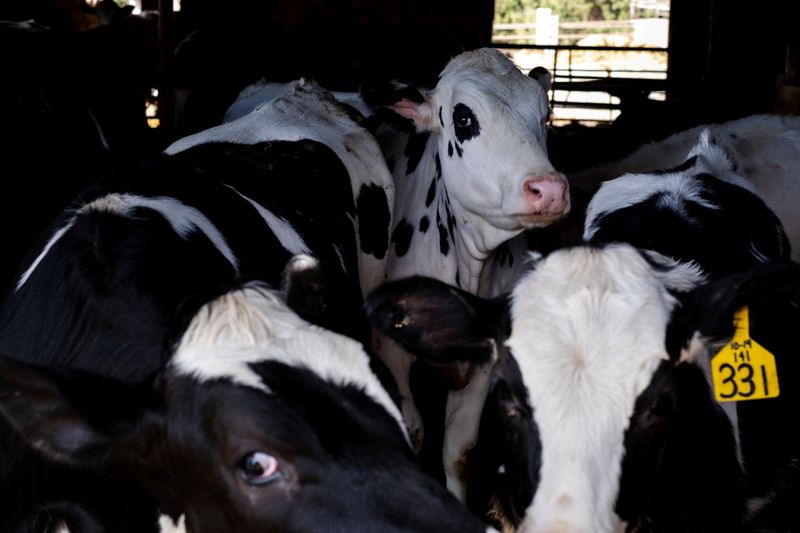By Leah Douglas and PJ Huffstutter
(Reuters) – U.S. states are playing a key role in the country’s response to a growing outbreak of bird flu among dairy cattle that has also infected a small number of people.
States are mainly responsible for testing cows and people for the virus, but are taking different approaches. Scientists monitoring bird flu are increasingly concerned that current surveillance efforts are not enough.
Federal officials have warned that further spread of the virus among cows could increase the risk of more human infections, although the risk to the general public remains low.
As of July 9, bird flu had infected 139 herds of dairy cows in 12 states, according to the U.S. Department of Agriculture. Four dairy workers have also been infected, the most recent in Colorado on July 3.
Here’s how the 12 US states with bird flu cases in dairy herds are handling human and cattle testing:
HUMAN TESTING
As of early July, 99 people had been tested for bird flu this year in four states: Michigan (56 people), Texas (20), Idaho (8), Colorado (8) and New Mexico (7), according to state health officials. ).
Officials in North Carolina, Ohio, South Dakota and Minnesota told Reuters they had not tested people since the dairy outbreaks began.
States varied in their testing criteria, which took into account factors such as whether a patient was exposed to sick animals or showed symptoms.
Health departments in Wyoming and Kansas did not respond to requests for their human testing numbers. The Iowa Health Department said it is monitoring all people exposed to the virus for symptoms, but did not provide numbers for human testing.
The Centers for Disease Control and Prevention has said at least 53 people have been tested for bird flu. The numbers are different because the CDC only reports tests done on people exposed to sick dairy cattle, while states in some cases also test people exposed to other sick animals such as cats, said CDC spokesman Jason McDonald.
The CDC advises doctors to notify local and state health departments if they want to test someone for bird flu. The physician should then immediately notify CDC if the tests are positive or inconclusive.
LIVESTOCK TESTING
States with bird flu in dairy herds are testing livestock at the behest of farmers who suspect infections, for research or other reasons, Agriculture Department officials said.
Iowa additionally requires testing for dairy herds within 20 kilometers (12.4 miles) of poultry farms with bird flu infections, which is currently about 25 to 35 flocks, said Don McDowell, communications director for the Iowa Department of Agriculture and Land Management.
Minnesota is testing farms that come into contact with infected herds, said Brian Hoefs, the state’s chief veterinarian and executive director of the Minnesota Board of Animal Health, tracking down suppliers, equipment and staff who had access to an infected farm.

The USDA in May began requiring states to test lactating dairy cows before transporting them across state lines, the only national testing requirement the agency has issued. About 6,600 cows were tested under that order, according to USDA data.
A USDA spokesperson said the agency is committed to working with states on their efforts to contain and eliminate bird flu, including possible further testing requirements.


